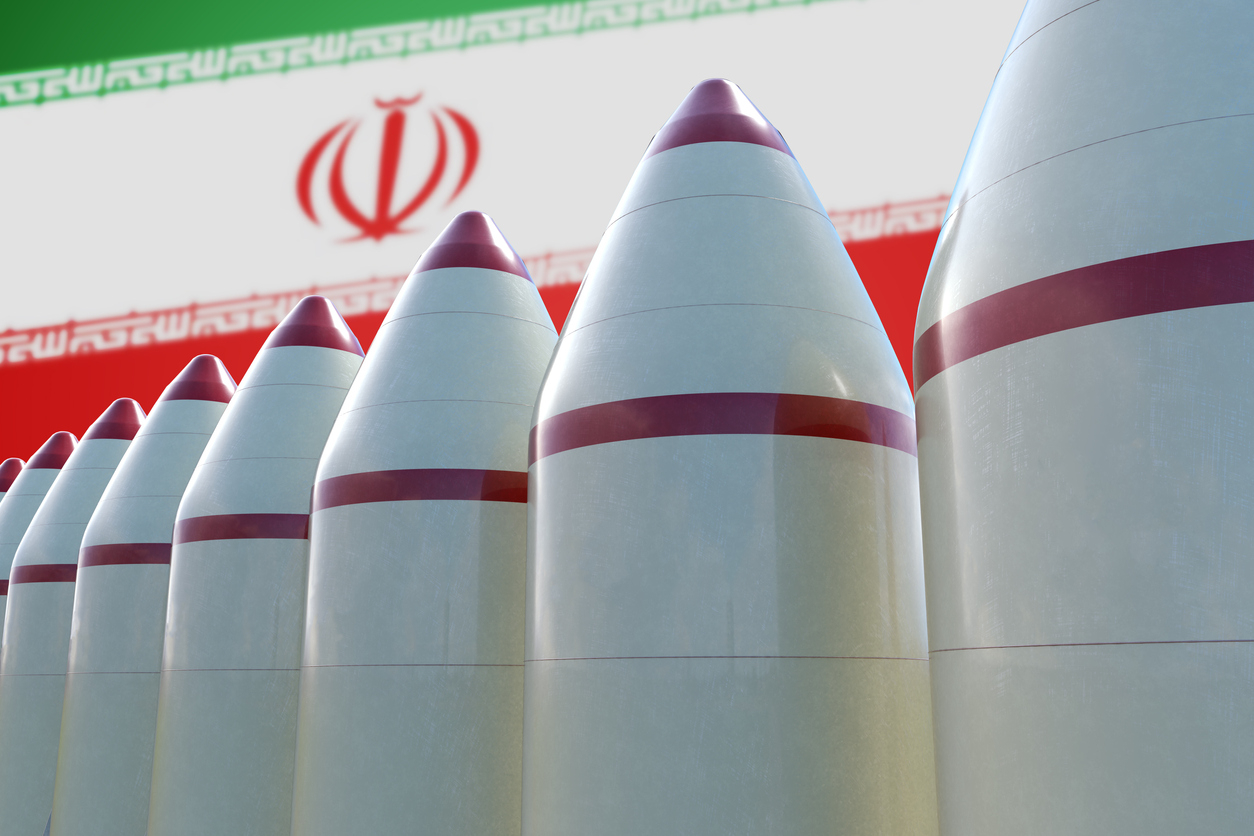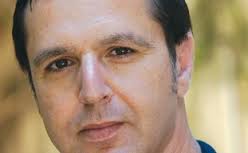 Administracja Bidena siedzi bezczynnie, podczas gdy rządzący w Iranie mułłowie kontynuują realizację programu nuklearnego. Międzynarodowa Agencja Energii Atomowej ogłosiła w zeszłym miesiącu, że Iran ma teraz wystarczająco dużo wzbogaconego uranu, aby zbudować bombę atomową. (Źródło obrazu: iStock)
Administracja Bidena siedzi bezczynnie, podczas gdy rządzący w Iranie mułłowie kontynuują realizację programu nuklearnego. Międzynarodowa Agencja Energii Atomowej ogłosiła w zeszłym miesiącu, że Iran ma teraz wystarczająco dużo wzbogaconego uranu, aby zbudować bombę atomową. (Źródło obrazu: iStock)
 Nuklearne zwycięstwo irańskich mułłów
Nuklearne zwycięstwo irańskich mułłów
Majid Rafizadeh
Tłumaczenie: Małgorzata Koraszewska
Administracja Bidena siedzi bezczynnie, podczas gdy rządzący w Iranie mułłowie kontynuują realizację programu nuklearnego.
Przez prawie półtora roku P5+1 (USA, Wielka Brytania, Francja, Rosja i Chiny oraz Niemcy) prowadziły bezowocne negocjacje z Iranem, podczas gdy teokratycznemu establishmentowi Islamskiej Republiki wyraźnie udało się przyspieszyć program nuklearny poprzez: zwiększenie wzbogacenia uranu z 20% do 60%, prowadzenie produkcji uranu metalicznego i dodanie kolejnych nowoczesnych centryfug. Po wyrażeniu zgody na rozszerzenie mechanizmu monitorowania Międzynarodowej Agencji Energii Atomowej (MAEA) poprzez ponowną instalację kamer monitorujących rok temu, Iran ogłosił, że nie pozwoli MAEA na oglądanie obrazów z tych urządzeń.
Co najważniejsze, Międzynarodowa Agencja Energii Atomowej ogłosiła w zeszłym miesiącu, że Iran ma teraz wystarczająco dużo wzbogaconego uranu, aby zbudować bombę atomową.
Reżim irański odmawia również odpowiedzi na pytania MAEA dotyczące cząstek uranu znalezionych w trzech tajnych i niezgłoszonych obiektach nuklearnych w Iranie. MAEA stwierdziła :
“Iran nie dostarczył technicznie wiarygodnych wyjaśnień w sprawie ustaleń Agencji w tych lokalizacjach… Agencja pozostaje gotowa do niezwłocznego nawiązania współpracy z Iranem w celu rozwiązania wszystkich tych kwestii”.
Instytut Nauki i Bezpieczeństwa Międzynarodowego ostrzegał w listopadzie 2021 r.:
“Iran ma wystarczająco dużo wzbogaconego fluorku uranu VI (UF6) w postaci uranu wzbogaconego do blisko 20 i 60 procent, aby wyprodukować w zaledwie trzy tygodnie wystarczającą ilość uranu do broni jądrowej (WGU), zgodnie z przyjętą tutaj miarą jako 25 kilogramów (kg) dla jednej bomby. Mógłby to zrobić bez wykorzystywania jako surowca niczego ze swoich zapasów uranu wzbogaconego do 5 procent. Wzrost irańskich zapasów uranu wzbogaconego do blisko 20 i 60 procent niebezpiecznie skrócił ten czas”.
Niemniej administracja Bidena nie podjęła jeszcze żadnych konkretnych działań, aby zapobiec przekształceniu Iranu w państwo nuklearne pomimo tych alarmujących doniesień, i chociaż we wspólnym oświadczeniu Wielka Brytania, Francja i Niemcy przyznali, że “Iran nie ma wiarygodnych potrzeb cywilnych na badania i rozwój oraz produkcję uranu metalicznego, które są kluczowym krokiem w rozwoju broni jądrowej”.
Administracja Bidena powinna zrozumieć, że jeśli Islamska Republika stanie się państwem nuklearnym, istnieje niebezpieczne prawdopodobieństwo, że broń nuklearna wpadnie w ręce irańskich marionetek i bojówek terrorystycznych lub że irański reżim podzieli się swoją technologią nuklearną z tymi grupami, nie wspominając o nuklearnym wyścigu zbrojeń, który rozpocznie się w regionie.
Reżim irański zakłada również fabryki broni za granicą i produkuje pociski balistyczne i broń – w tym precyzyjnie naprowadzane pociski z zaawansowaną technologią – do uderzania w określone cele w innych krajach, w tym w Syrii. Najnowszy raport “Panelu Ekspertów ds. Jemenu” Rady Bezpieczeństwa ONZ ujawnił w tym roku, że Huti z Jemenu otrzymywali znaczną ilość broni od irańskiego reżimu:
“Coraz więcej dowodów sugeruje, że osoby lub podmioty w Islamskiej Republice Iranu dostarczają Huti znaczne ilości broni i komponentów”.
Reżim irański od lat jest uznawany przez Departament Stanu USA jako “państwowy sponsor terroryzmu”. Jeden z dyplomatów reżimu, Assadollah Assadi – sądzony w Europie za nieudany zamach terrorystyczny w Paryżu, którego celem był wiec “Wolny Iran” – został niedawno skazany na 20 lat więzienia. Kilka krajów, w tym Kuwejt, zatrzymało komórki irańskich szpiegów próbujących infiltrować ich kraje, a Iran używał do takich celów swoich ambasad i dyplomatów w obcych krajach.
Reżim irański często groził “wymazaniem” całego kraju – Izraela – co oznacza, że zamierza: unicestwić lub zniszczyć Izrael. Generał Hossein Salami, szef irańskiego Korpusu Strażników Rewolucji Islamskiej (IRGC) jasno przedstawił plany reżimu: “Naszą strategią jest wymazanie Izraela z globalnej mapy politycznej” – powiedział w 2019 roku w kontrolowanym przez państwo irańskim programie telewizyjnym Kanał 2.
Administracja Bidena powinna zrozumieć, że jest to rewolucyjny reżim, który priorytetowo traktuje dążenie do swoich rewolucyjnych ideałów. Obejmują one eksportowanie swojej ideologii i systemu rządzenia do innych krajów na całym świecie. Reżim wręcz włączył tę misję do konstytucji Iranu, jak stanowi preambuła do niej:
“Misją konstytucji jest stworzenie warunków sprzyjających rozwojowi człowieka zgodnie ze szlachetnymi i uniwersalnymi wartościami (szyickiego) islamu”.
Konstytucja dalej stwierdza , że “zapewnia niezbędną podstawę dla zapewnienia kontynuacji rewolucji w kraju i za granicą”.
Ugłaskiwanie rządzących mułłów przez administrację Bidena i polityka wyczekiwania wkrótce zostawi świat z niebezpiecznym, uzbrojonym w broń nuklearną Iranem.
Gdyby administracja Bidena wyeliminowała broń nuklearną Iranu, posunięcie to nie tylko oszczędziłoby światu jeszcze bezwzględnego reżimu, który działa despotycznie w kraju i za granicą; spowodowałoby to również natychmiast gwałtowny wzrost wyników sondaży Bidena.
Zawartość publikowanych artykułów i materiałów nie reprezentuje poglądów ani opinii Reunion’68,
ani też webmastera Blogu Reunion’68, chyba ze jest to wyraźnie zaznaczone.
Twoje uwagi, linki, własne artykuły lub wiadomości prześlij na adres:
webmaster@reunion68.com










